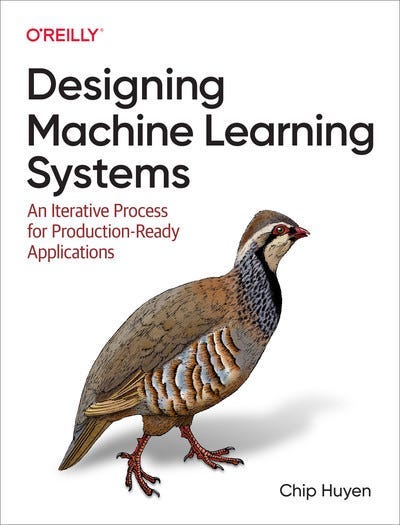How 95% of GenAI Interviews Are Structured
So you want to be a GenAI Engineer (or AI Engineer)?
Great choice; it’s one of the most exciting fields right now. But let me tell you a secret: most candidates completely bomb their GenAI interviews.
Why?
Because they think building a chatbot with LangChain + Pinecone = Industry-ready.
Spoiler: it’s not.
Let’s break down how these interviews are usually structured, why people fail, and what you can do to stand out.
The 4 Layers of a GenAI Interview
Think of the interview process like a video game. You don’t just fight the boss, you need to get through the mini-bosses first. Each layer tests if you can move beyond being a demo builder to an end-to-end system thinker.
1. Foundations (Coding & DSA)
Yes, even in GenAI roles, the basics matter.
You’ll often start with a coding round where they check:
-> Arrays, strings, hashmaps, dynamic programming
-> Python fluency (OOP and functional patterns)
-> SQL queries (because AI without data is… useless)
You might think, “But I’m here to work on LLMs, not bubble sort!”
True. But interviewers want to see if you can think algorithmically, optimize queries, and write clean, modular code. If you can’t pass this round, no amount of “I built a chatbot with GPT-4” will save you.
2. Machine Learning & GenAI Basics
Now we’re talking! This is where the AI-specific grilling begins:
Transformers, embeddings, and the attention mechanism
Tokenization, context windows, and latency trade-offs
Prompt engineering vs fine-tuning (when to use which)
Many candidates can use an embedding API. Very few can explain what embeddings are or why their choice of chunk size and tokenizer impacts latency and cost. That’s the difference between someone who can debug a production issue and someone who… Googles it in panic.
3. System Design (GenAI / RAG / LLM Pipelines)
This is where most candidates freeze. The interviewer might say:
Design a multilingual RAG pipeline.
Handle retrieval at scale; say 100M+ documents.
What if the OpenAI API fails? How do you design fallback orchestration?
How do you guard against hallucinations?
It’s not about code anymore; it’s about thinking like an architect. Can you design something that works not just for 10 users, but for 10 million?
This is also where terms like "hybrid search," "rerankers," "caching," and "sharding" show up. If those sound scary, don’t worry; they’re learnable.
The key is to practice thinking in trade-offs: latency vs accuracy, cost vs scale.
4. End-to-End Thinking
Finally, the big picture. Imagine you’ve built this shiny GenAI pipeline. The interviewer now asks:
How does this fit into a real product?
How would you monitor it in production?
What’s your cost optimization strategy?
How do you handle governance, compliance, and data privacy?
Because real-world GenAI isn’t about making cool demos. It’s about shipping systems that don’t bankrupt your company, don’t hallucinate into lawsuits, and actually create business value.
Why Candidates Fail
Here’s the brutal truth: After speaking with lots of guys over Twitter Spaces, I got to know that most of the guys preparing for GenAI interviews get stuck at the toy demo level. They build a chatbot with LangChain and Pinecone and think that’s enough to impress. It’s not.
When the real interview comes, they stumble because they don’t understand the trade-offs that matter in production, things like balancing latency with accuracy or optimizing costs while scaling to millions of users. Even worse, they often can’t explain why they made certain design choices in the first place.
And perhaps the biggest gap?
They never connect the dots. They know a bit of ML theory, and they know how to glue together a demo, but they can’t show how that knowledge translates into system design and, ultimately, business impact.
In short: they act like hackers, not engineers. And companies aren’t looking for hackers; they’re looking for engineers who can think end-to-end.
Best System Design Book for you is by the GOAT writer, Chip Huyen.
Find books like these which will be helpful to you for Data Science or AI/ML Engineering interviews here. The list is having lots of books pdfs, interviews materials, cheat-sheets and many more class notes. Go grab it now.
How to Actually Stand Out
The good news? You don’t need a PhD or a decade of research experience to shine in a GenAI interview. What you need is clarity, structure, and practice.
Start by mastering the basics: embeddings, retrieval, chunking strategies, and rerankers. It’s not enough to just use them; you should understand them deeply. If you can clearly explain, for example,
why you’d use cosine similarity instead of dot product in a retrieval setup, you’re already ahead of most candidates.
Next, show system design thinking. Don’t just describe how you’d chain APIs together. Practice sketching real pipelines, adding caching, hybrid search, and monitoring into your designs. Even if you do it on paper, interviewers notice when you think like an architect instead of a scriptwriter.
Equally important: learn to tell a story. Don’t dump jargon. Instead, walk the interviewer through your thought process: “Here’s the problem, here’s my design, here’s how it scales, and here are the trade-offs I considered.”
That kind of structured explanation makes people lean forward and actually listen.
Finally, practice with real-world scenarios. Think about how you’d design a multilingual RAG system, or how you’d orchestrate workflows with n8n or LangGraph. Consider pipelines that are cost-aware and resilient when APIs fail. The goal is to step beyond “demo-land” and into the mindset of solving real problems that companies face.
My “Gyan” [Thoughts]
Let’s be honest, no company is paying six figures just for another “Hello World chatbot.” They’re paying for systems that can survive real users, real data, and real CFOs asking, “Why did our bill triple last night?”
So don’t just memorize answers. Build your story, think like an architect, and show that you can connect the dots from ML theory → system design → business value.
That’s the difference between being the candidate who gets a polite rejection email… and the one who makes the interviewer whisper, “Finally, someone who gets it.”
You know, it went well. We all learn rejections, too. But if you are reading this blog, please try to do 50–60% of what I have mentioned. Thank me later here. Or if you did well, you can always thank me here.
Thank you for reading this. Follow me on socials for more updates, behind-the-scenes work, and personal insights:




